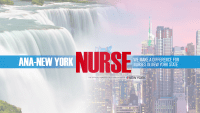Nurse License Protection Case Study with Risk Management Strategies Presented by NSO
This is sponsored content and is supplied by Nurses Service Organization. The content has been reviewed by our HCM internal editorial staff but is not peer-reviewed.
A State Board of Nursing (SBON) complaint may be filed against a nurse by a patient, a patient’s family member, colleague, employer, and/or other regulatory agency, such as the Department of Health. Complaints are subsequently investigated by the SBON to ensure that licensed nursing professionals are practicing safely, professionally, and ethically. SBON investigations may lead to outcomes ranging from no action against the nurse to revocation of the nurse’s license to practice. Therefore, when a complaint is asserted against a nurse to the SBON, the nurse must be equipped with the resources to adequately defend the matter. Being unprepared may represent the difference between a nurse retaining or losing their license. This case study involves a registered nurse (RN) who had been working in the Emergency Department (ED) of a large regional hospital for more than ten years at the time of the incident.
Summary
At approximately 1:00 a.m. on a Saturday morning, an adult male patient in his mid-50s was dropped off by his wife at the ED of a large regional hospital. The patient was assessed in the ED triage area by the insured RN for nausea and vomiting. The patient exhibited difficulty walking and speaking intelligibly, was verbally combative towards the RN, and he repeatedly objected to a physical examination. The RN documented an initial set of vital signs in the patient’s healthcare information record, as well as a notation that the patient “drank three bottles of tequila, drunk, nausea and vomiting, history of alcohol and drug abuse.” After 1:30 a.m., there was no documentation in the patient’s healthcare information record from the RN The RN later stated that he was attending to other patients in the ED. Labs and a urinalysis were ordered for this patient but were never collected.
At approximately 3:00 a.m., the patient was moved into a room, and an ED technician documented another set of vital signs for the patient.
The patient’s healthcare information record reflects that at approximately 5:00 a.m., the patient was found on the floor, unresponsive, by another ED staff member who had come to record vital signs. A review of facility video monitoring footage revealed that at approximately 5:00 a.m. two additional staff members entered the patient’s room. At around the same time, the RN was seen walking past the room carrying linens, briefly looking into the room, and then continuing to walk down the hall with the linens. Shortly thereafter, the RN returned to the room with a blood glucose monitoring machine in his hand. Another staff member then arrived with a stretcher, and the patient is placed on the stretcher and transported back into the main area of the ED.
Within minutes of arrival in the main area of the ED, CPR was initiated and continued for approximately 30 minutes. The RN did not participate in the resuscitation efforts. At 5:37 a.m., the patient was pronounced dead. According to the autopsy report, respiratory arrest was the sole cause of death. The autopsy report revealed an ethanol blood level of 395 mg/dL. An empty 375 ml bottle of tequila was found in the patient’s room.
Insurance Matters
Professional liability insurance help safeguards you against allegations of malpractice. Get valuable resources to help you understand situations where liability or individual malpractice insurance can help.
Learn More
Risk Management Comments
A month after the incident, following the conclusion of an internal investigation, the hospital filed a complaint with the SBON regarding the RN’s practice, and the SBON began its own investigation.
Approximately six months after this incident, the RN was interviewed by SBON staff. The SBON was critical of the RN for failing to appropriately document patient care throughout his shift. It was also critical of his failure to initiate nursing interventions to support patient care, such as an IV insertion and drawing blood for laboratory testing. In addition, the SBON was also critical of the apparent failure of the RN to react in a timely manner to the patient’s change in condition, or his fall. Moreover, he failed to conduct an assessment or take vital signs after the patient fell.
The RN was remorseful that he did not initiate any nursing assessments or interventions for the patient beyond his initial assessment. He further admitted to the SBON that he failed to document patient care throughout this shift per hospital policy. The RN produced a letter expressing his regret regarding the incident, as well as several letters of support from colleagues and supervisors, who spoke to the RN’s professionalism and care for patients in the ED.
The RN also raised some mitigating circumstances in this case. He advised that, at the time the patient arrived, the ED was busy with a weekend rush of patients and was operating without sufficient staffing. The RN informed the SBON that at the time the patient presented to the ED, he and the other ED nurses were each responsible for 15-20 patients, and in some cases, patients were waiting six to eight hours to be seen by a physician.
Resolution
Considering all evidence and the RN’s testimony, the SBON concluded that the RN’s conduct constituted grounds for discipline. The SBON issued a formal reprimand against the RN’s license and required him to complete continuing education coursework on professional accountability, professional nursing documentation, and critical thinking.
Subsequent to the discipline imposed by the first SBON, the SBON in another state where the RN had previously held an active license initiated its own investigation and enforcement hearings. The SBON in the second state, upon reviewing the stipulated facts that led to discipline in the first state, determined that it would be appropriate to also reprimand the RN’s license, impose a $1,400 civil monetary penalty, and require him to complete additional continuing education coursework.
The total incurred to defend the RN in these matters exceeded $4,700.
(Note: Figures represent only the defense expense payments made on behalf of the insured nurse.)
Risk Control Recommendations
Nurses may utilize the following risk control recommendations to evaluate their current practices:
- Conduct a comprehensive patient assessment. If an assessment cannot be completed, document the interventions taken. Document patient complaints or concerns in the patient’s healthcare information record, as well as all steps taken to resolve them.
- Follow safety protocols to prevent self-harm, falls, or other accidents, as clinically indicated, including removing potentially harmful objects from the patient’s immediate area and closely observing the patient.
- Conduct contraband searches in compliance with facility policy to ensure the safety of patients at risk of injuring themselves or others.
- Follow documentation standards established by professional nursing organizations and comply with your facility’s standards. The healthcare information record should accurately reflect the care of the patient.
- Document your patient care assessments, observations, communications and actions in an objective, timely, accurate, complete, appropriate, and legible manner. Always use complete, objective descriptions of nursing assessments and observations.
- Communicate in a timely and accurate manner both initial and ongoing findings regarding the patient’s status and response to treatment.
- Provide and document the practitioner notification of a change in condition/symptoms/patient concerns and document the practitioner’s response and/or orders.
- Initiate additional steps, if necessary, to ensure timely patient care. These measures may include, among others, escalating to the supervisor/nurse manager, administrators, attending or covering physician, licensed independent practitioner, and/or medical staff leadership until patient care concerns are addressed.
- Maintain files that can be helpful with respect to your character. Retain copies of letters of recommendation, performance evaluations, thank-you letters from patients, awards, records of volunteer work and continuing education certificates.
Disclaimers: These are illustrations of actual claims that were managed by the CNA insurance companies. However, every claim arises out of its own unique set of facts which must be considered within the context of applicable state and federal laws and regulations, as well as the specific terms, conditions and exclusions of each insurance policy, their forms, and optional coverages. The information contained herein is not intended to establish any standard of care, serve as professional advice or address the circumstances of any specific entity. These statements do not constitute a risk management directive from CNA. No organization or individual should act upon this information without appropriate professional advice, including advice of legal counsel, given after a thorough examination of the individual situation, encompassing a review of relevant facts, laws and regulations. CNA assumes no responsibility for the consequences of the use or nonuse of this information.
This publication is intended to inform Affinity Insurance Services, Inc., customers of potential liability in their practice. This information is provided for general informational purposes only and is not intended to provide individualized guidance. All descriptions, summaries or highlights of coverage are for general informational purposes only and do not amend, alter or modify the actual terms or conditions of any insurance policy. Coverage is governed only by the terms and conditions of the relevant policy. Any references to non-Aon, AIS, NSO, NSO websites are provided solely for convenience, and Aon, AIS, NSO and NSO disclaims any responsibility with respect to such websites. This information is not intended to offer legal advice or to establish appropriate or acceptable standards of professional conduct. Readers should consult with a lawyer if they have specific concerns. Neither Affinity Insurance Services, Inc., NSO, nor CNA assumes any liability for how this information is applied in practice or for the accuracy of this information.
Nurses Service Organization is a registered trade name of Affinity Insurance Services, Inc., a licensed producer in all states (TX 13695); (AR 100106022); in CA, MN, AIS Affinity Insurance Agency, Inc. (CA 0795465); in OK, AIS Affinity Insurance Services, Inc.; in CA, Aon Affinity Insurance Services, Inc., (CA 0G94493), Aon Direct Insurance Administrators and Berkely Insurance Agency and in NY, AIS Affinity Insurance Agency.
Reprinted with permission by Nurses Service Organization


















